Audiology
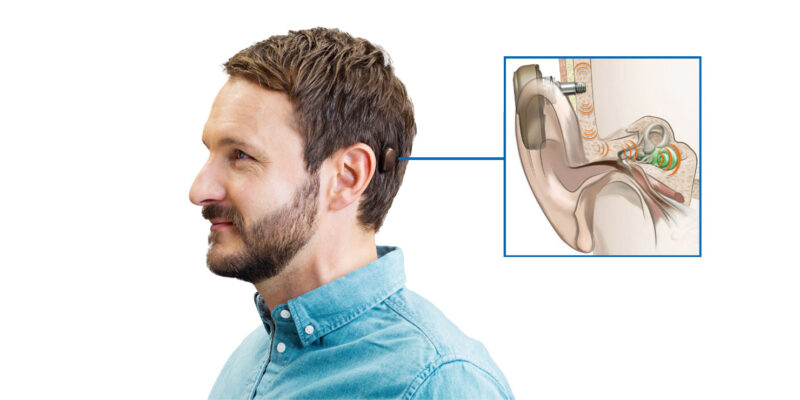
How does the human ear work?
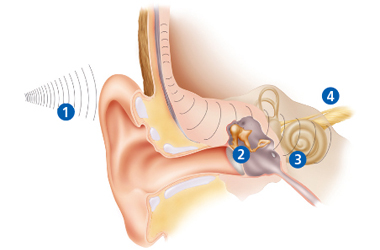
- Sound is ‘funnelled’ into the ear canal by the external ear (pinna). It travels down the ear canal where it strikes the ear drum.
- This causes the eardrum and middle ear bones (ossicles) to vibrate.
- The hearing organ (cochlea) detects these
vibrations and converts them into electrical impulses. - These impulses are sent to the brain via the hearing nerve where they are interpreted as sound.
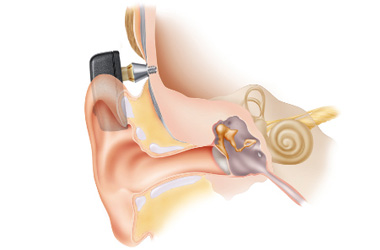
What is a bone conduction hearing device? (BCHD)
- Conventional hearing aids send sound down the ear canal, ear drum and middle ear to the cochlea.
- BCHDs are a type of hearing aid which are positioned on the bone behind the ear.
- BCHDs send sound directly to the cochlea using vibrations sent through the skull, bypassing the middle ear.
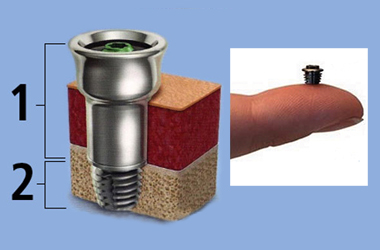
There are three parts to this hearing system:
- Titanium Abutment (like a press stud)
- Titanium Fixture (screw)
The abutment and fixture together are known as the implant. - Sound processor (hearing aid)
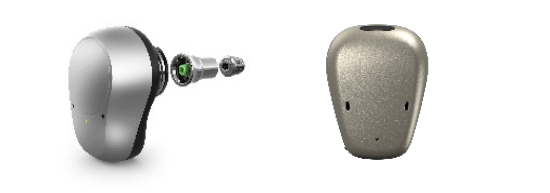
The sound processor clips on and off:
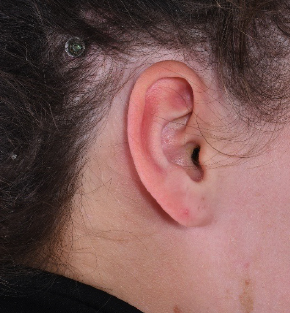
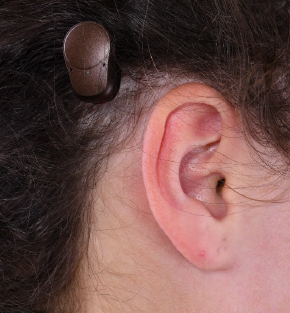
How does a BCHD or BCHI work?
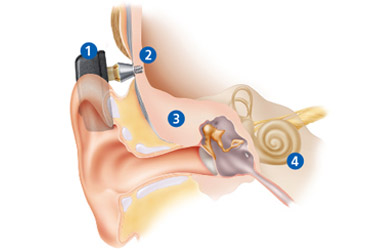
- The sound processor picks up sound and converts this into vibrations.
- These vibrations are transferred to the abutment and fixture and sent into the bones of the skull.
- The vibrations pass through the skull to the cochlea which is encased in bone.
- The cochlea detects these vibrations (similar to those from the ear drum and ossicles) and converts them into electrical impulses which are sent to the brain to be interpreted as sound.
Who might benefit from a BCHD?
Patients with a conductive hearing loss
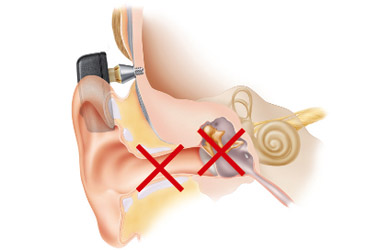
This may be caused by a problem with the ear canal, the middle ear, or both.
A conventional hearing aid may struggle to overcome these problems and the sound may not be delivered correctly.
However, a BCHD would bypass this and send the sound directly to the cochlea via the bone surrounding it.
Patients unable to wear a conventional hearing aid.
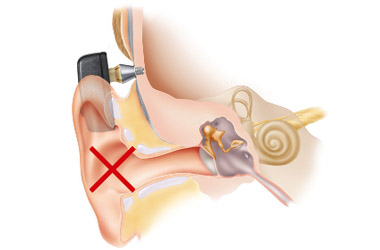
Reasons may include:
Very frequent ear infections
Severe allergies
Absent or extremely small outer ear or ear canal
A BCHD is not worn within the ear, therefore, leaving the ear open.
Patients with single sided deafness
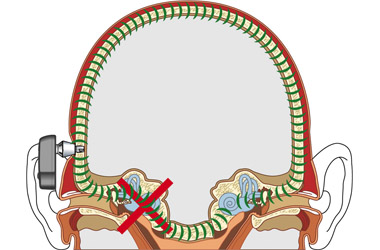
Some patients have useful hearing in only one of their ears and gain no benefit from a hearing aid in their non-hearing ear.
As they can only hear sound through one ear they struggle in noisy environments and find it difficult to locate sounds.
A BCHD can be implanted on the poorer hearing side.
As a BCHD sends vibration of sound through the skull to both ears at the same time, they will be heard in the better ear. This allows the patient to detect sounds on the poor side and hear them on the good side.
How is a BCHI fitted?
- Involves a surgical procedure performed by the Ear, Nose and Throat (ENT) consultant (however, there is a non-surgical option in certain cases)
- The surgery is performed under local anaesthetic for adults (the patient will be awake and the area is numbed) or general anaesthetic for children (the patient will be asleep).
- Patients tend to go home on the same day and will be given advice on caring for the abutment site.
- One week after surgery you will have a review with the surgical team.
- Three weeks after the procedure the sound processor will be fitted by the audiologist.
- Ongoing care of the abutment site is provided by the BCHI nurses in ENT.
Surgical overview
There are different methods of performing the surgery, the technique used will be determined by a range of factors including age and general health.
For all techniques, a small area of hair around the implant site is shaved and the area where the implant will be is marked with a pen.
Linear incision technique
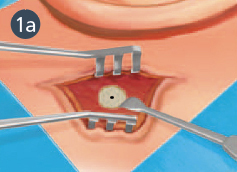
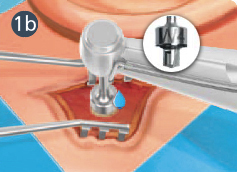
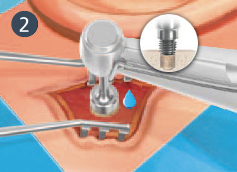
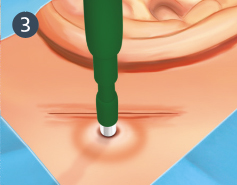
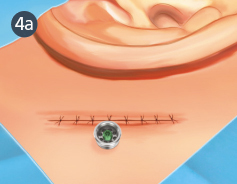
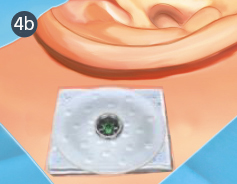
MONO procedure
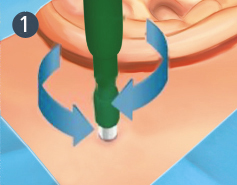
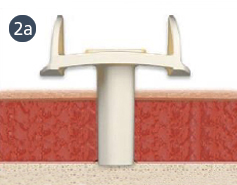
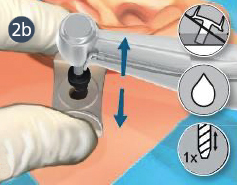
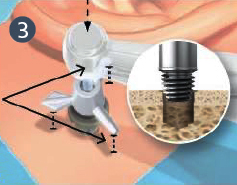
a special drill.
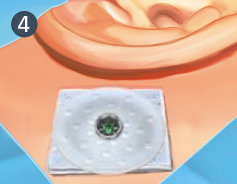
Possible complications
- A study published in 2020 looks at the complications that can arise following BCHI surgery.
- The study collected information about 162 implants performed at James Cook University Hospital over a 5 year period (2013 to 2018).
- Most of the complications reported can be addressed by one of the BCHD nurses.
Most common complications include:
- 9.3% – Skin growing around the sides of the abutment (soft tissue overgrowth)
- 9.9% – Localised skin infection
- 4.3% – Implant coming out
- 1.2% – Damage through trauma, for example; head injury
- 0% – Exposed bone (caused by skin not healing to the edge of the abutment)
- 0.6% – Tingling sensation around the site
- 1.9% – Persistent pain
- 1.9% – Persistent bleeding at abutment site
- 0.6% – Bone fails to grow around the implant (failed osseointegration)
Contact us
If you require any further information, please do not hesitate to contact the programme using the contact details below:
Telephone: 01642 282869, Monday to Friday, 8.30am to 4.30pm
Email: [email protected]
Images throughout provided by the companies, Oticon Medical and Cochlear.
Patient experience
South Tees Hospitals NHS Foundation Trust would like your feedback. If you wish to share your experience about your care and treatment or on behalf of a patient, please contact The Patient Experience Department who will advise you on how best to do this.
This service is based at The James Cook University Hospital but also covers the Friarage Hospital in Northallerton, our community hospitals and community health services.
To ensure we meet your communication needs please inform the Patient Experience Department of any special requirements, for example; braille or large print.
T: 01642 835964
E: [email protected]